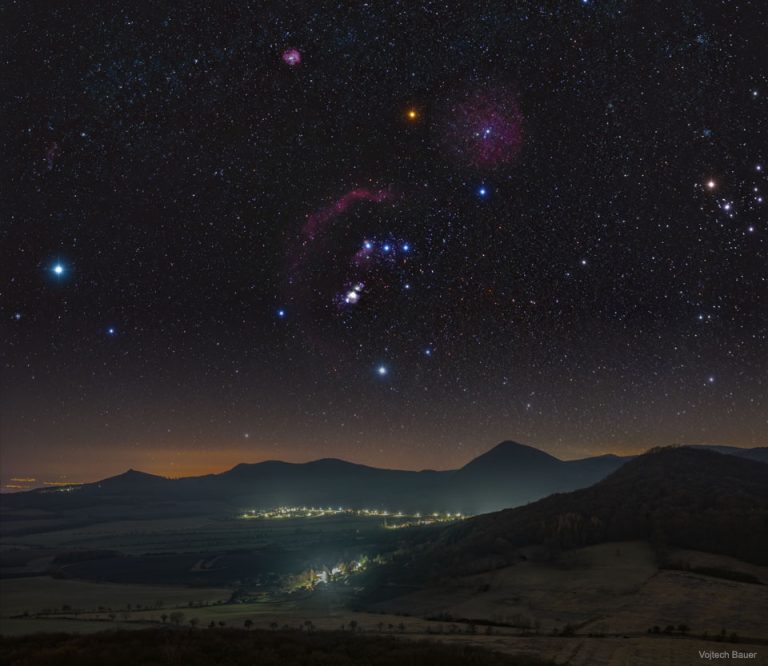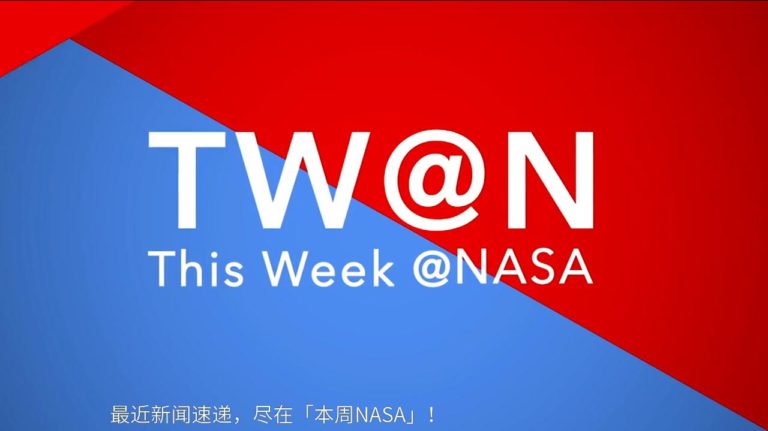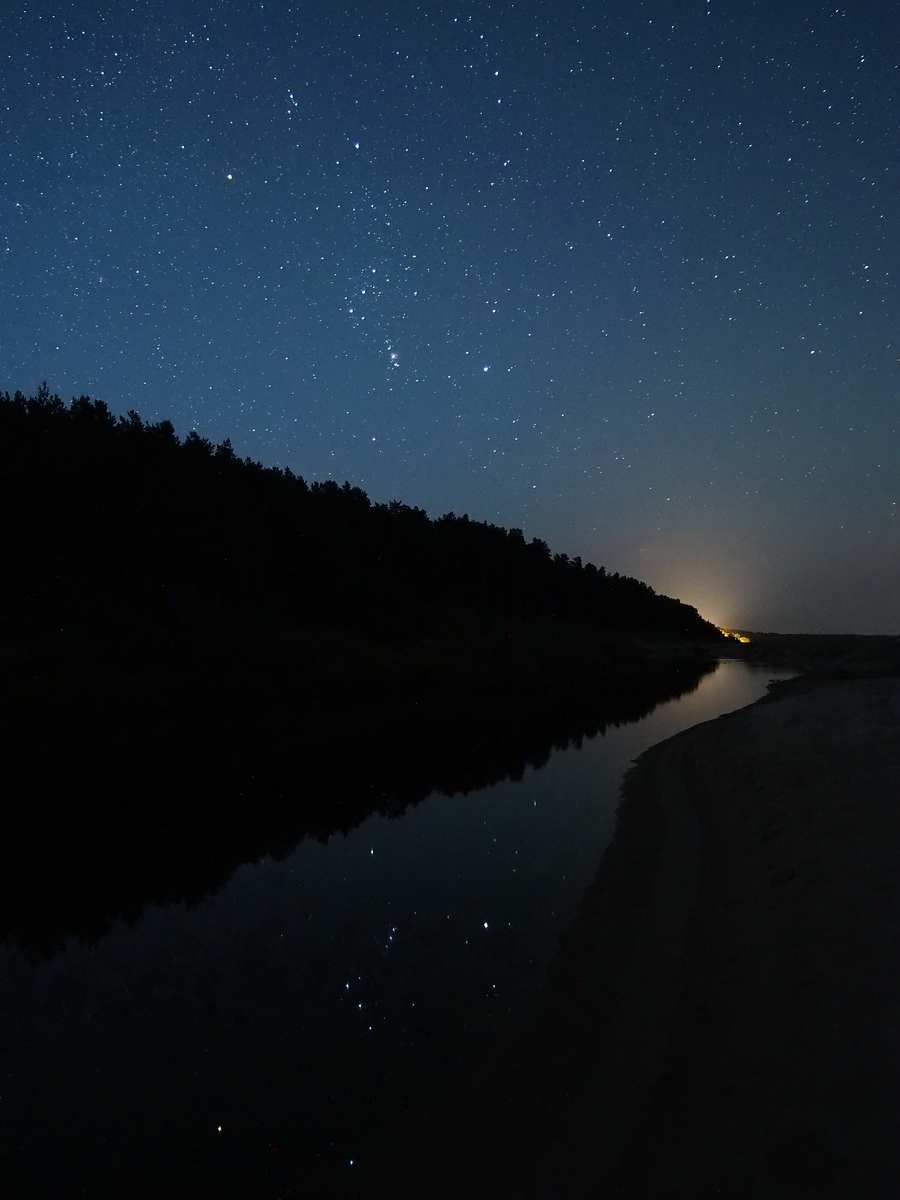本周NASA速递(20200322)
NASA谈及冠状病毒大流行;通过在线资讯了解NASA动态;猎户座飞船进行了更多的测试……最近新闻速递,尽在「本周NASA」!

NASA谈及冠状病毒大流行;通过在线资讯了解NASA动态;猎户座飞船进行了更多的测试……最近新闻速递,尽在「本周NASA」!

图片来源:NASA 在阿尔忒弥斯任务期间,NASA的宇航员乘坐猎户座飞船升空前往月球时,保障他们安全的将会是发射中止系统。猎户座飞船将由太空发射系统发射升空,在发射和升空途中可能会遇到无法预见的紧急情况,而设置发射中止系统的目的就是在紧急事件中将飞船上的宇航员带到安全地点。 2月25日,在诺斯罗普•格鲁曼公司(Northrop Grumman)位于马里兰州埃尔克顿的工厂中,NASA成功完成了姿态控制发动机(attitude control motor,ACM)的测试,姿态控制发动机由诺斯罗普•格鲁曼公司制造,作用是控制猎户座飞船发射中止系统的行驶方向和动力。30秒钟的点火测试是姿态控制发动机的第三次也是最后一次测试,目的是确保它达到从阿尔忒弥斯2号任务(Artemis II)开始执行的载人任务标准。 [rml_read_more] 视频来源:诺斯罗普•格鲁曼公司 测试过程中,点火是在极冷条件下进行的,固体火箭发动机产生了7000磅(约3200千克)以上的推力,由8个高压气门引向多个不同的方向,从而为猎户座飞船和上面的宇航员提供足够的动力,引导行进方向进行安全着陆。 发射中止系统由三个固体火箭发动机组成:中止运动发动机用于将乘员舱带离运载火箭;姿态控制发动机用于引导和定位舱体;而后,在部署降落伞之前,分离发动机启动,将发射中止系统与猎户座飞船分离,以确保机组人员安全着陆。 2019年7月2日,NASA在第二代上升-中止系统(Ascent Abort-2)的全应力测试中对发射中止系统进行了演示。测试过程中,一架特殊的火箭助推器将测试版猎户座飞船送上了31000英尺(约9400米)的高度,证明了在发射时,也就是猎户座飞船承受的空气动力推力最大时,三个固体火箭发动机仍能按计划正常运行。2010年,NASA在第一代发射台中止系统(Pad Abort-1)中测试了发射中止系统的功能,那次的测试表明,如果在火箭发射前,发射台上出现了问题,三个发动机也都可以正常运行。这些测试有助于评估和完善一系列相关的系统,而它们对将搭乘猎户座飞船进行太空之旅的宇航员安全至关重要。 NASA已经完成了分离发动机的性能测试,也完成了中止运动发动机三项测试的其中两项。在阿尔忒弥斯2号任务之前,只差中止运动发动机的最后一项测试,完成之后,发射中止系统上的所有三个发动机都将达到载人航天飞行的标准,这让NASA和猎户座在2024年之前将第一位女性和下一位男性送上月球又近了一步。 参考来源: https://www.nasa.gov/feature/fired-up-final-test-of-orion-motor-critical-to-astronaut-safety-a-spectacular-success

2020 February 18 Orion over the Central Bohemian Highlands Image Credit & Copyright: Vojtěch Bauer Explanation: Do you recognize this constellation? Setting past the Central Bohemian Highlands in the Czech Republic is Orion, one of the most identifiable star groupings on the sky and an icon familiar to humanity for over 30,000 years. Orion has looked pretty much the same during this time and should continue to look the same for many thousands of years into the future. Prominent Orion is high in the sky at sunset this time of year, a recurring sign of (modern) winter in Earth’s northern hemisphere and summer in the south. The featured picture is a composite of over thirty images taken from the same location and during the same…

2020 January 20 Quadrantid Meteors through Orion Image Credit & Copyright: Petr Horálek Explanation: Why are these meteor trails nearly parallel? Because they were all shed by the same space rock and so can be traced back to the same direction on the sky: the radiant of the Quadrantid Meteor Shower. This direction used to be toward the old constellation of Quadrans Muralis, hence the name Quadrantids, but when the International Astronomical Union formulated its list of modern constellations in 1922, this constellation did not make the list. Even though the meteors are now considered to originate from the recognized constellation of Bootes, the old name stuck. Regardless of the designation, every January the Earth moves through a dust stream and bits of this dust…

2020 January 2 The Fainting of Betelgeuse Image Credit & Copyright: Jimmy Westlake (Colorado Mountain College) Explanation: Begirt with many a blazing star, Orion the Hunter is one of the most recognizable constellations. In this night skyscape the Hunter’s stars rise in the northern hemisphere’s winter sky on December 30, 2019, tangled in bare trees near Newnan, Georgia, USA. Red super giant star Betelgeuse stands out in yellowish hues at Orion’s shoulder left of center, but it no longer so strongly rivals the blue supergiant star Rigel at the Hunter’s foot. In fact, skygazers around planet Earth can see a strikingly fainter Betelgeuse now, its brightness fading by more than half in the final months of 2019. Betelgeuse has long been known to be a…

2019 December 12 Decorating the Sky Image Credit & Copyright: Leonardo Julio (Astronomia Pampeana) Explanation: Bright stars, clouds of dust and glowing nebulae decorate this cosmic scene, a skyscape just north of Orion’s belt. Close to the plane of our Milky Way galaxy, the wide field view spans about 5.5 degrees. Striking bluish M78, a reflection nebula, is on the right. M78’s tint is due to dust preferentially reflecting the blue light of hot, young stars. In colorful contrast, the red sash of glowing hydrogen gas sweeping through the center is part of the region’s faint but extensive emission nebula known as Barnard’s Loop. At lower left, a dark dust cloud forms a prominent silhouette cataloged as LDN 1622. While M78 and the complex Barnard’s…

版权:NASA 阿耳忒弥斯1号(Artemis I)飞船已经移交进行重要测试;商业乘员计划(Commercial Crew Program)又迈进一大步;沙尘暴与火星上水的消失之间可能存在关联……最近新闻速递,尽在「本周NASA」! 用于执行美国航空航天局(NASA)阿耳忒弥斯1号任务的猎户座(Orion)飞船于11月24日抵达俄亥俄州,搭乘的是NASA超级古比鱼(Super Guppy)运输机。猎户座飞船由乘员舱(crew module)和欧洲制造的服务舱(service module)组成,将在NASA位于俄亥俄州桑达斯基的梅溪观测站(Plum Brook Station)进行测试。在为期四个月的测试中,猎户座会被置于极端环境里,模拟它将在月球进行的三周任务期间所经历的环境条件,从而确认所有组件和系统在太空条件下均能正常工作。 NASA的合作伙伴波音公司已将其载人太空运输(CST)-100星际飞机( Starliner)移至佛罗里达州卡纳维拉尔角空军基地(Cape Canaveral Air Force Station)的发射台上,为非载人轨道飞行测试(Orbital Flight Test)作准备,以便最终前往国际空间站(International Space Station)。这是NASA“商业乘员计划”的一部分,该计划会再次将宇航员从美国的土地上送入太空。飞行测试计划于12月17日进行,将在执行载人航天飞行任务之前,对星际飞机、阿特拉斯-5型运载火箭(Atlas V rocket,又称宇宙神Ⅴ号运载火箭)、地面系统以及在轨对接和着陆操作进行测试。 NASA的一系列火星探测器在2018年火星全球沙尘暴中收集了宝贵的数据,为揭示一种名为“沙尘塔”(dust towers)的现象提供了新线索,火星上的水在数十亿年间消失殆尽,这或许与“沙尘塔”的存在相关。依据最近发表的两篇学术论文,科学家认为火星上的水蒸气会被困在这些“沙尘塔”中,然后被带着升向高处,就像乘坐直升梯进入太空一样,最终穿过高层大气散失在太空中。在整整一个火星年里都可以观测到沙尘塔,但在火星全球性沙尘暴期间,沙尘塔的数量似乎要更多一些。正如在2018年全球沙尘暴期间观测到的那样,高度达到大约50英里(80千米)的沙尘塔,可以扩散开的面积大约有两个辽宁省那么大。 NASA的宇航员已经在地球之外持续生活了20年,为庆祝这一历史性时刻,NASA制作了一个新的视频系列。以“下至地球”(Down to Earth)为题,NASA的宇航员讨论了在国际空间站上的太空之旅给他们带来的世界观转变。自从2000年11月2日国际空间站的第一批常驻乘员比尔•谢泼德(Bill Shepherd)、谢尔盖•克里卡列夫(Sergei Krikalev)和尤里•吉津科(Yuri Gidzenko)抵达以来,一直都有人类在这个轨道前哨站中生活和工作。想了解更多该系列视频的相关信息,请访问nasa.gov/station。 NASA目前的空间站宇航员杰西卡•梅厄(Jessica Meir)、克里斯蒂娜•科赫(Christina Koch)和安德鲁•摩根(Andrew Morgan)录制了一段感恩节视频,以表达他们的感恩所在,以及他们特殊“火鸡节”晚餐菜单上的一些菜品。摩根:“我们有蔬菜,我们会加热绿豆和土豆;当然,还有装在小袋子里的熏制火鸡。” 梅厄:“还有玉米面包酱,这太棒了,我们可以把它塞到火鸡里,让它看起来更有感恩节火鸡的样子。” 科赫:“我想知道把火鸡从袋子里取出来之后,由谁去切开它?” 梅厄:“我们还有一些土豆泥和玉米泥,所以看来我们还是有很多不错的选择,能让我们美餐一顿。” 梅厄、科赫和摩根:“感恩节快乐!” 以上就是「本周 NASA」的全部内容!更多详细信息请访问 nasa.gov/twan。

2019 November 22 Orion Rising Image Credit & Copyright: Vitalij Kopa Explanation: Looking toward the east in the early hours of a September morning this single exposure made with tripod and camera captured a simple visual experience. Rising above the tree-lined slope are familiar stars in planet Earth’s northern night and the constellation Orion the Hunter. Brighter stars marking the celestial Hunter’s shoulder (Betelgeuse), foot (Rigel), belt, and sword are clearly reflected in the calm waters from northern Latvia’s Vitrupe river. Of course, winter is coming to planet Earth’s northern hemisphere. By then Orion and this beautiful starry vista will be seen rising in early evening skies. 猎户座东升 影像提供与版权: Vitalij Kopa 说明: 在9月的一个清晨使用固定在三脚架上的相机,朝东方拍摄的单曝光照片,记录了这幅肉眼即可见的景观。影像中,悬在斜坡树线上方的,是北半球的星空和猎户座。而拉脱维亚北方维特鲁佩河的平静水面,则清晰的倒映着猎人肩部的亮星参宿四、足部的参宿七、腰带三星和猎人配剑。冬季即将降临地球的北半球,届时,猎户座和这片美丽的星野,入夜后就会升起。

2019 October 30 M42: Inside the Orion Nebula Image Credit & Copyright: Josep M. Drudis & Don Goldman Explanation: The Great Nebula in Orion, an immense, nearby starbirth region, is probably the most famous of all astronomical nebulas. Here, glowing gas surrounds hot young stars at the edge of an immense interstellar molecular cloud only 1500 light-years away. In the featured deep image in assigned colors highlighted by emission in oxygen and hydrogen, wisps and sheets of dust and gas are particularly evident. The Great Nebula in Orion can be found with the unaided eye near the easily identifiable belt of three stars in the popular constellation Orion. In addition to housing a bright open cluster of stars known as the Trapezium, the Orion Nebula…

北京时间今日凌晨2时,NASA局长吉姆·布莱恩斯汀(Jim Bridenstine)在华盛顿总部公布了下一代阿尔特弥斯宇航服,这两套宇航服将用于载人登月和登陆火星。 NASA展示的这两套宇航服,一套为猎户座舱内宇航服,一套在探索月球南极表面时使用,称为xEMU。xEMU月面舱外活动宇航服是阿波罗宇航服,以及目前国际空间站舱外太空行走时穿着的宇航服的改进版,这种新型的宇航服大范围地适合宇航员的身材,并且在月面的舒适性和移动性都得到了改善。 从左至右分别是,约翰逊航天中心的宇航服工程师Amy Ross,NASA局长Jim Bridenstine,约翰逊航天中心的宇航服工程师Kristine Davis,约翰逊航天中心猎户座载人飞船生存系统项目经理Dustin Gohmert。 NASA/Joel Kowsky Credit:NASA/Joel Kowsky Credit:NASA/Joel Kowsky Credit:NASA/Joel Kowsky 宇航服工程师Kristine Davis捡石头 动图截取自NASA video [rml_read_more] 来源:NASA video 宇航服的主要功能 Credits: NASA 压力服和生命维持系统,是宇航员们执行太空行走时身着宇航服的两个主要部分。 压力服包括冷却服,上身,下身和头盔,压力服可以保护宇航员们的身体并使活动自如。 宇航服背面的背包是生命支持系统,这个背包中含有的氧气,可供宇航员们呼吸,并为宇航服加压,氧气在背包和压力服之间的循环是靠风扇的作用,宇航员们呼出的二氧化碳也从背包中排出,另外背包里的调节器可确保宇航服内的压力正常。 xEMU宇航服简介 来自:AFP 当进行太空行走时,宇航员要面对辐射,粉尘,碎片和极端温度的变化,目前美国宇航员舱外太空行走的最长记录为8小时56分,由Susan Helms 和 Jim Voss创造。 太空不易 太空旅行是艰难和无情的,但NASA从未像现在这样准备好去迎接未知。 来源:NASA video 这段视频来自NASA的阿尔特弥斯团队,他们计划在2024年前将首名女宇航员和一位男宇航员送至月球南极,这将为未来前往火星做准备。 参考 [1]https://www.nasa.gov/image-feature/a-new-spacesuit-for-artemis-generation-astronauts [2]https://www.nasa.gov/feature/spacewalk-spacesuit-basics [3]https://www.flickr.com/photos/nasahqphoto/albums/72157711353446036